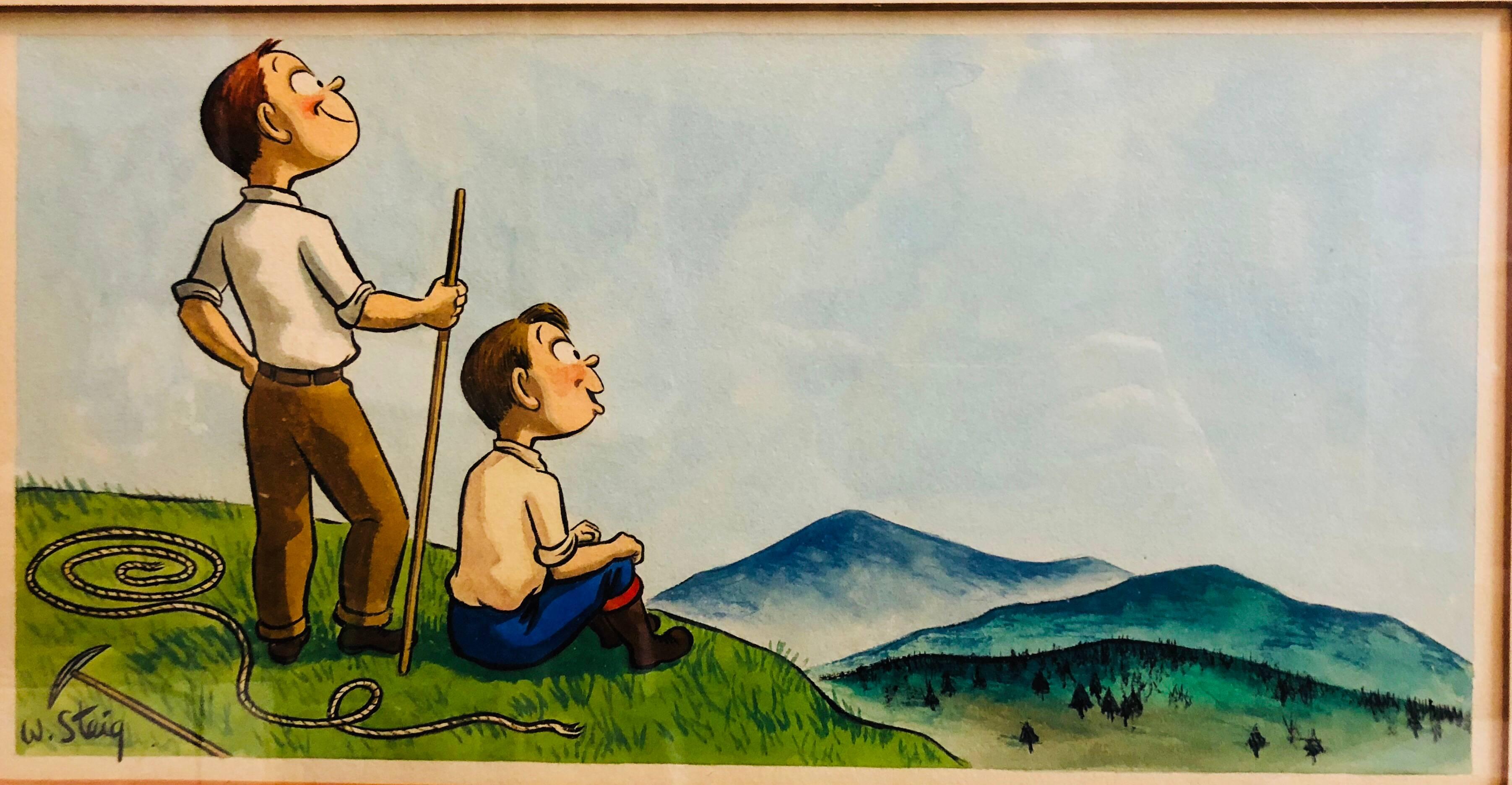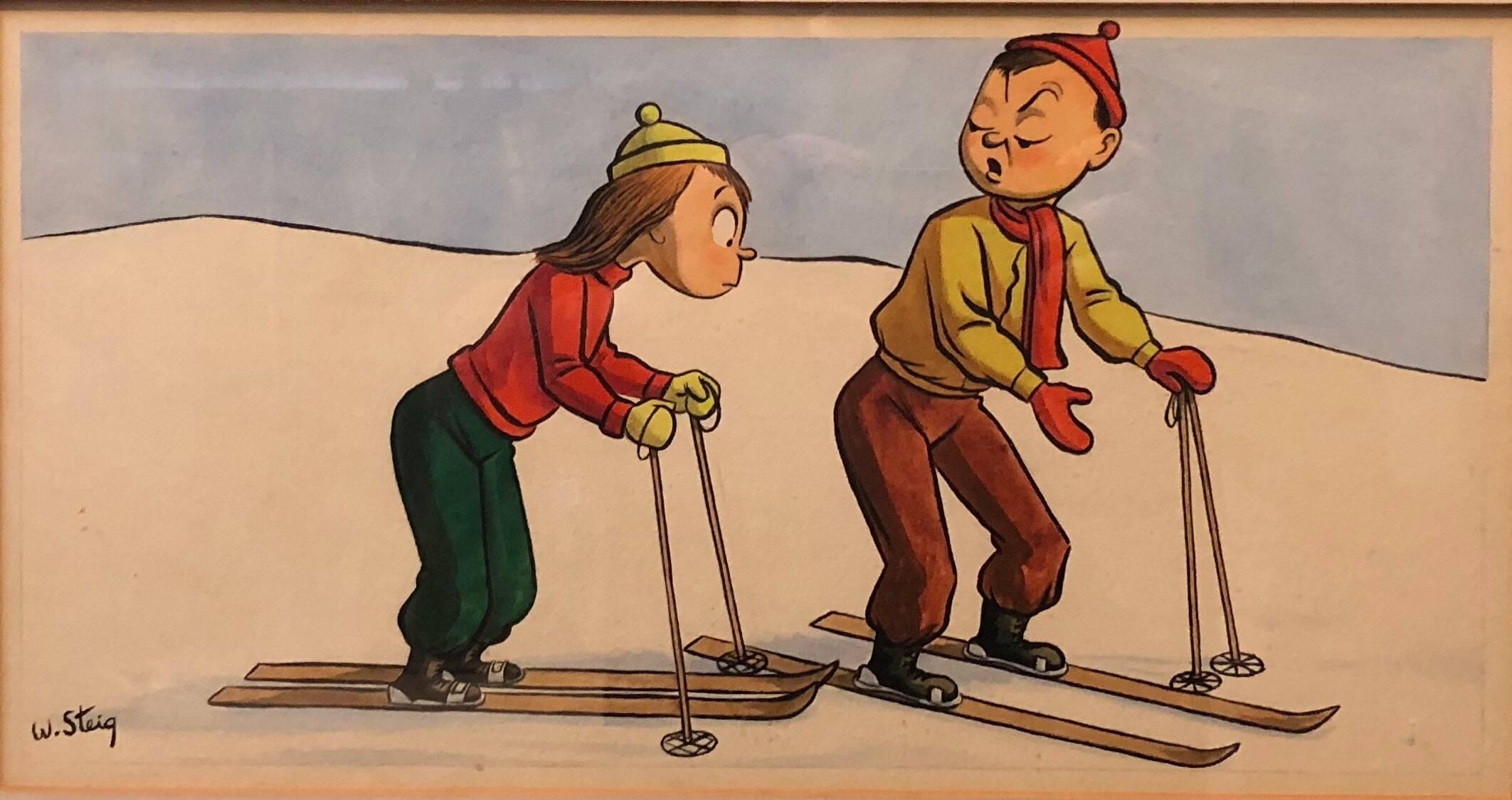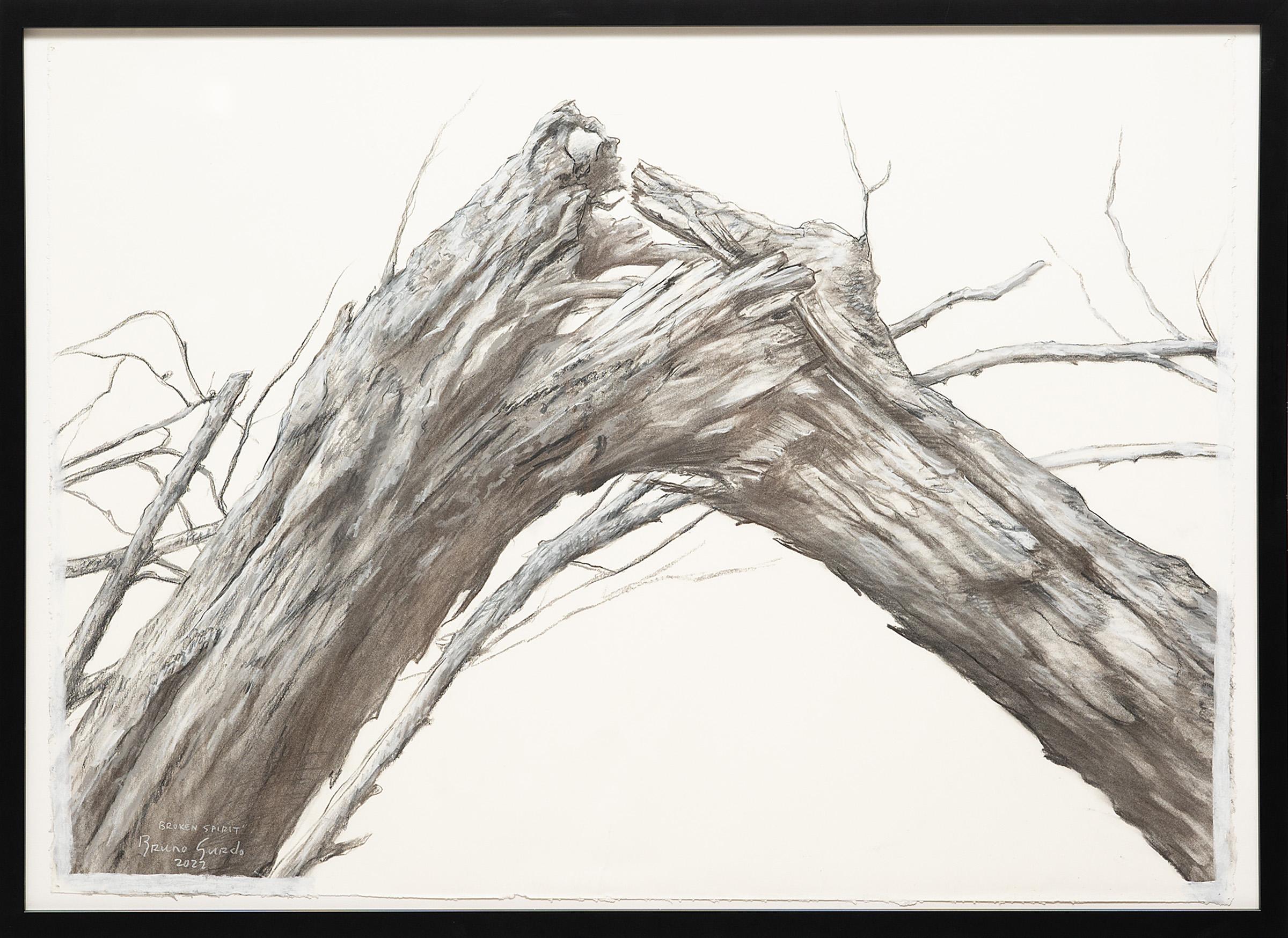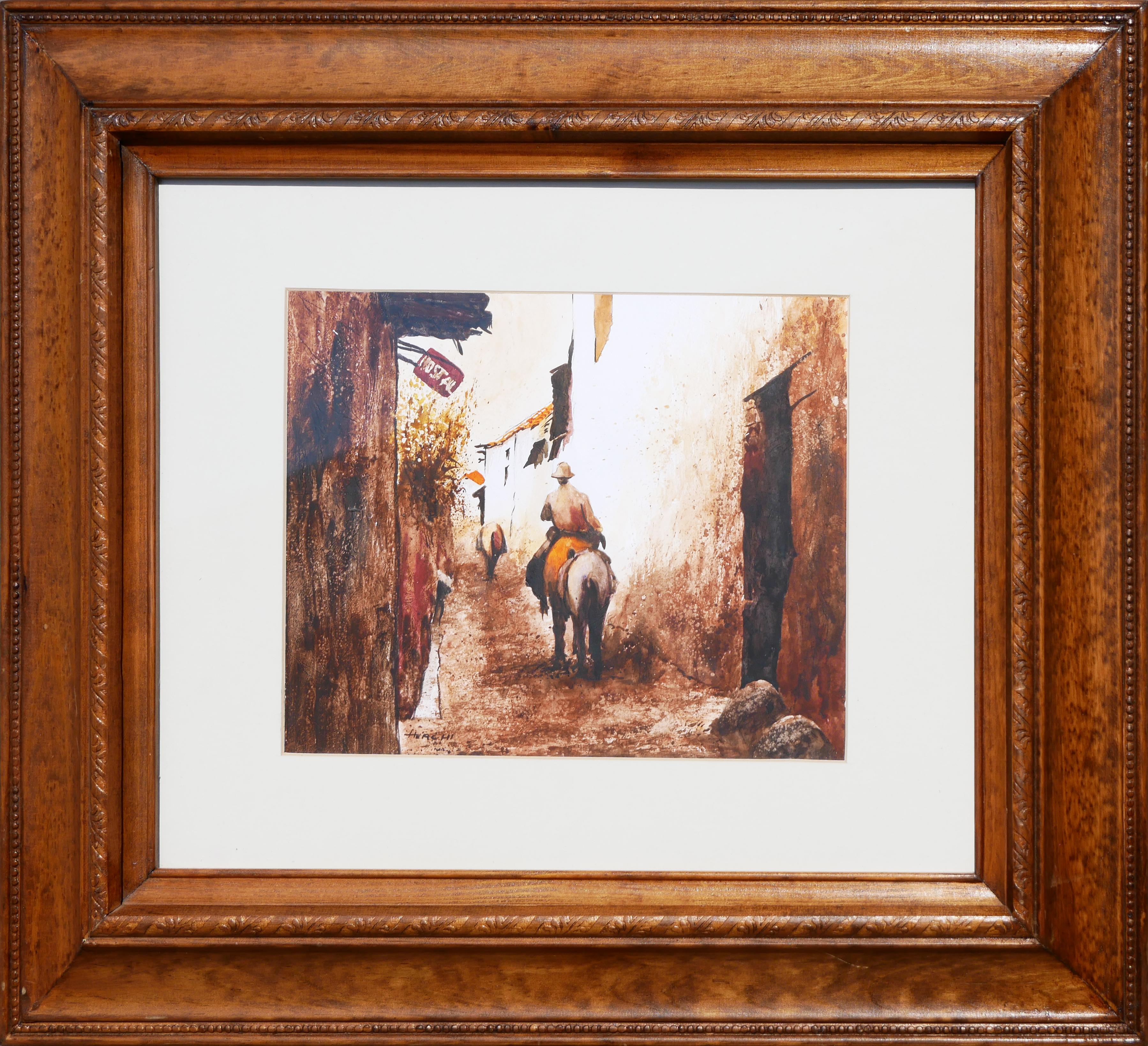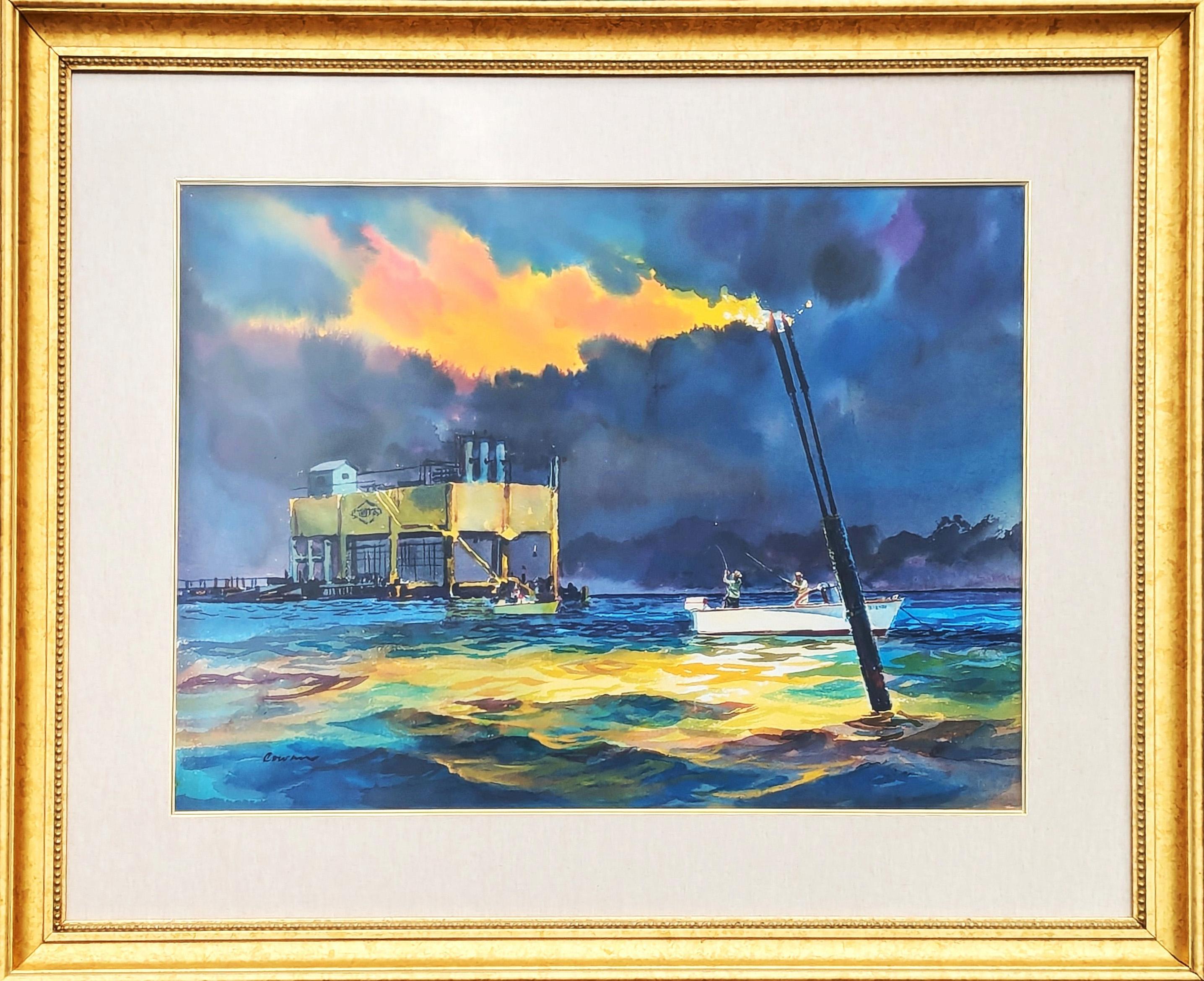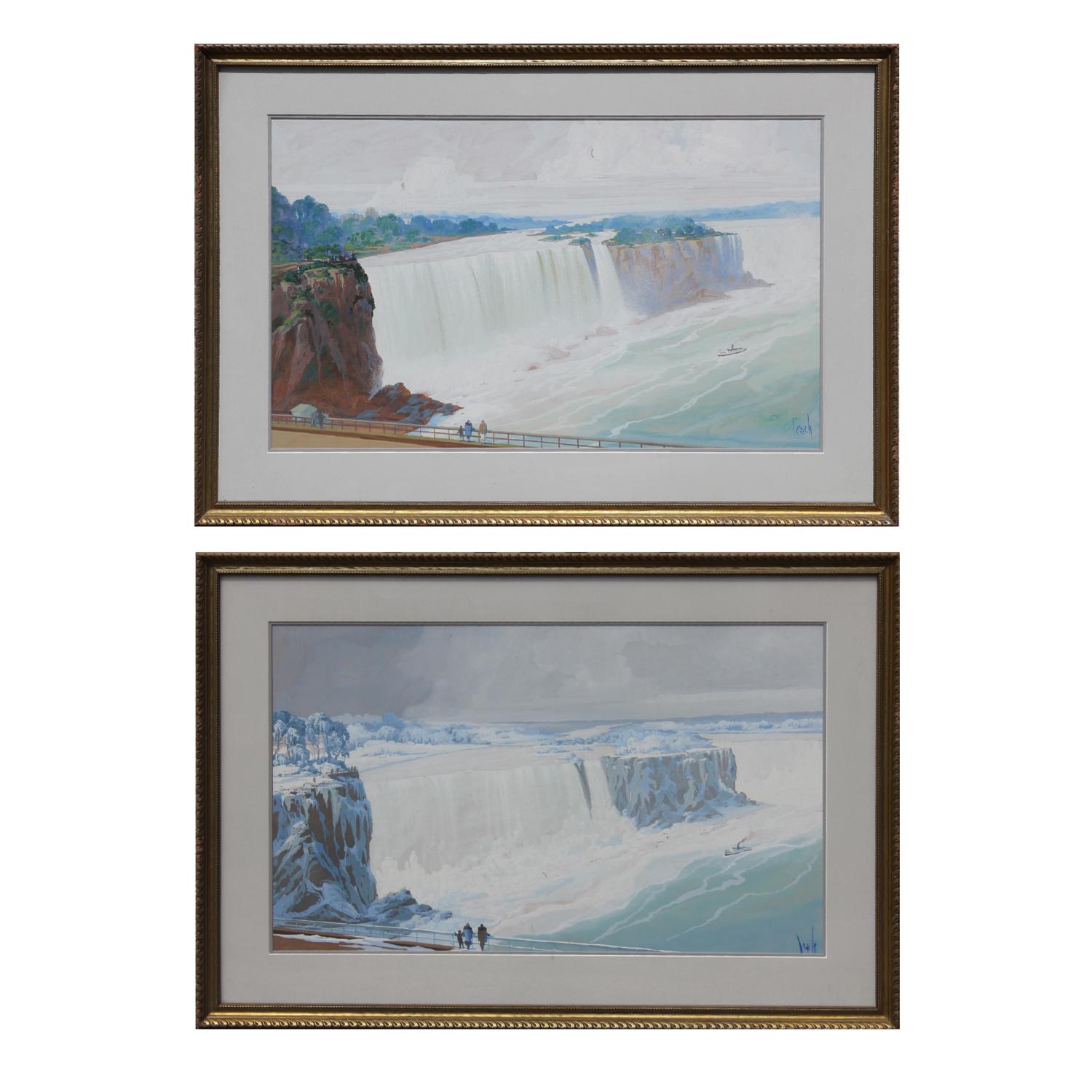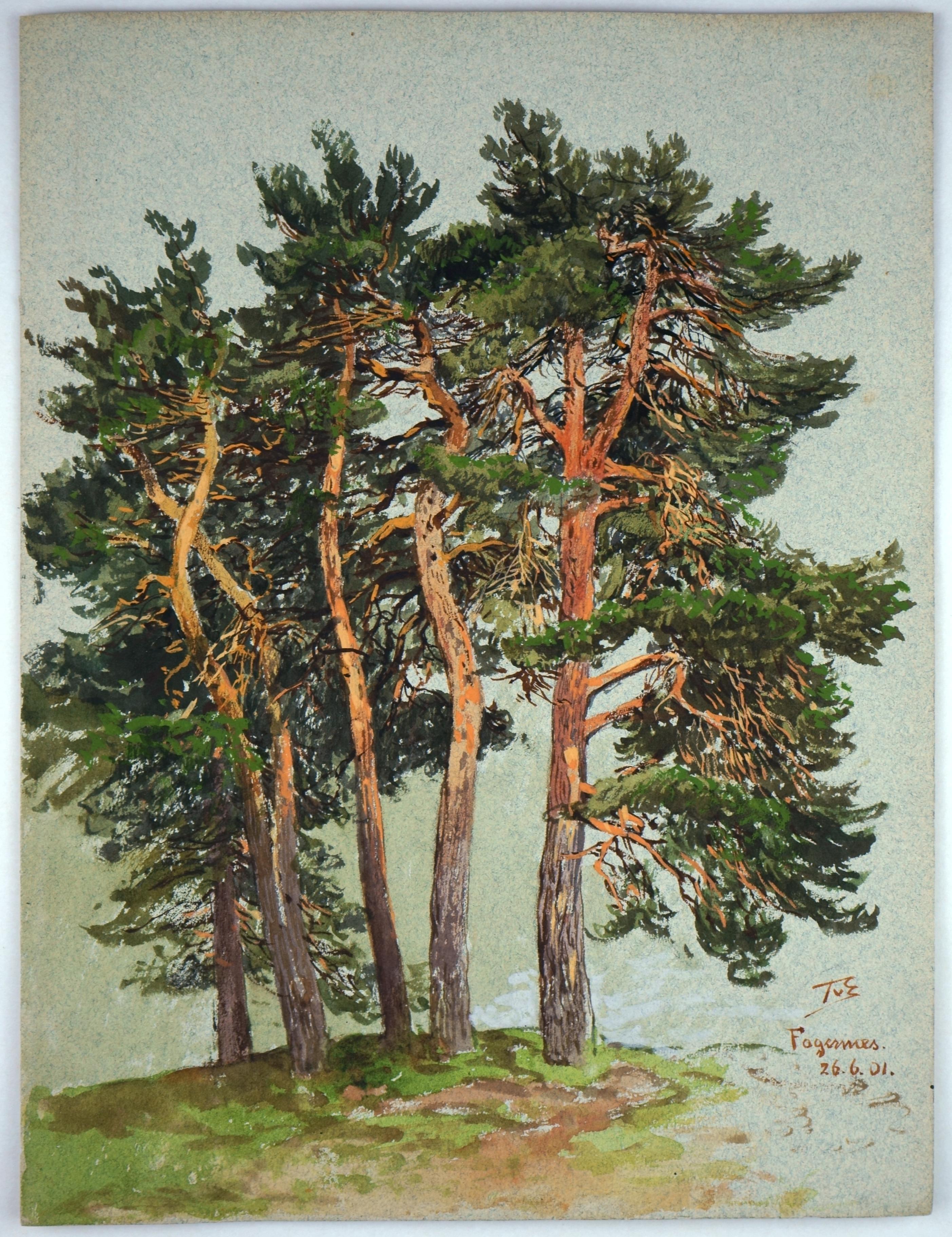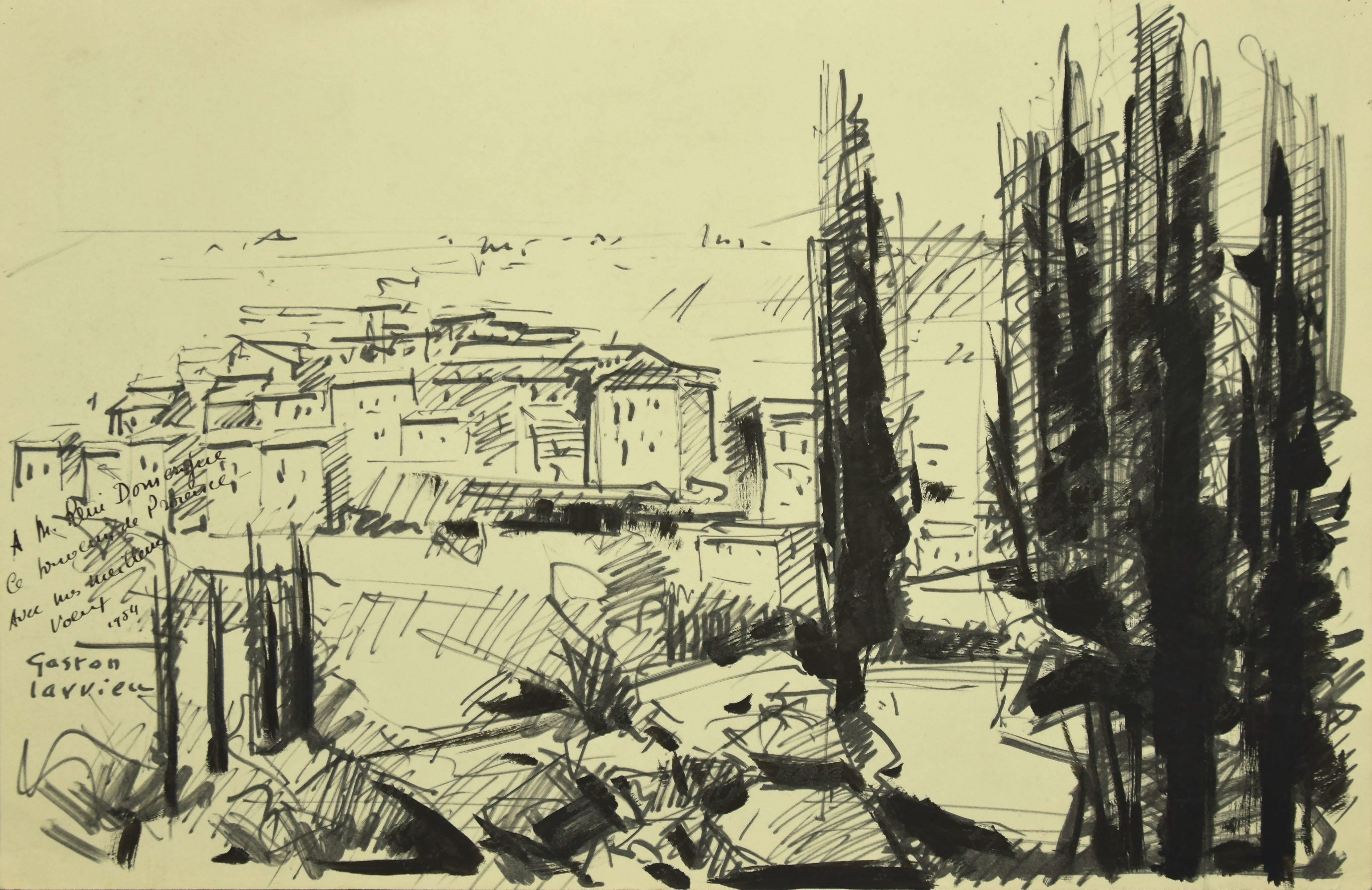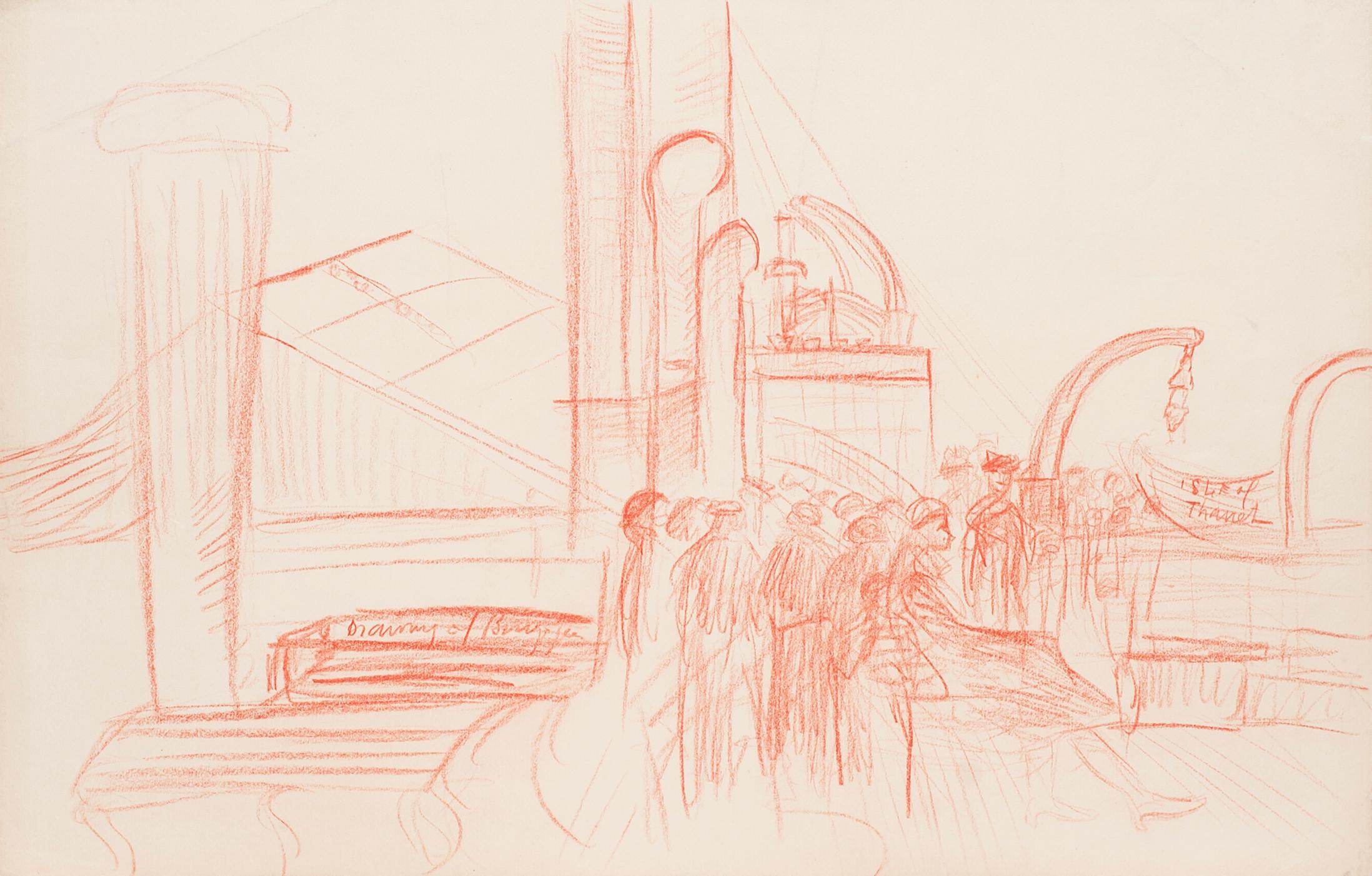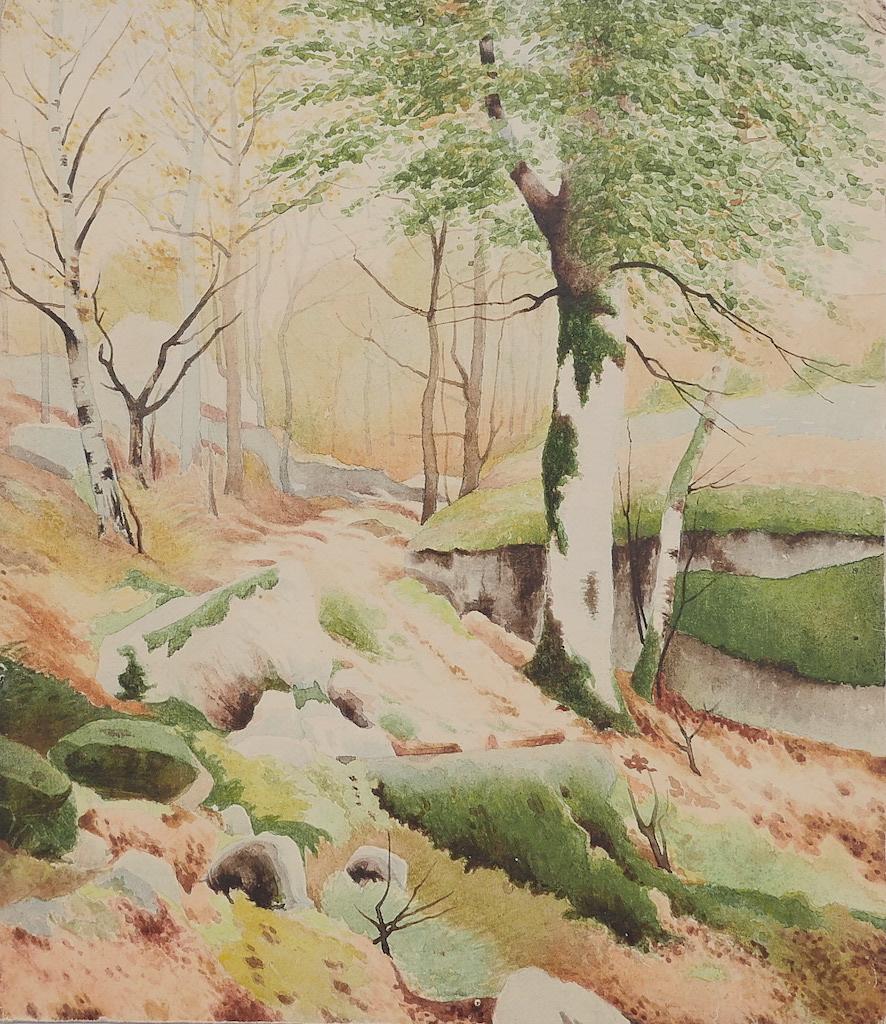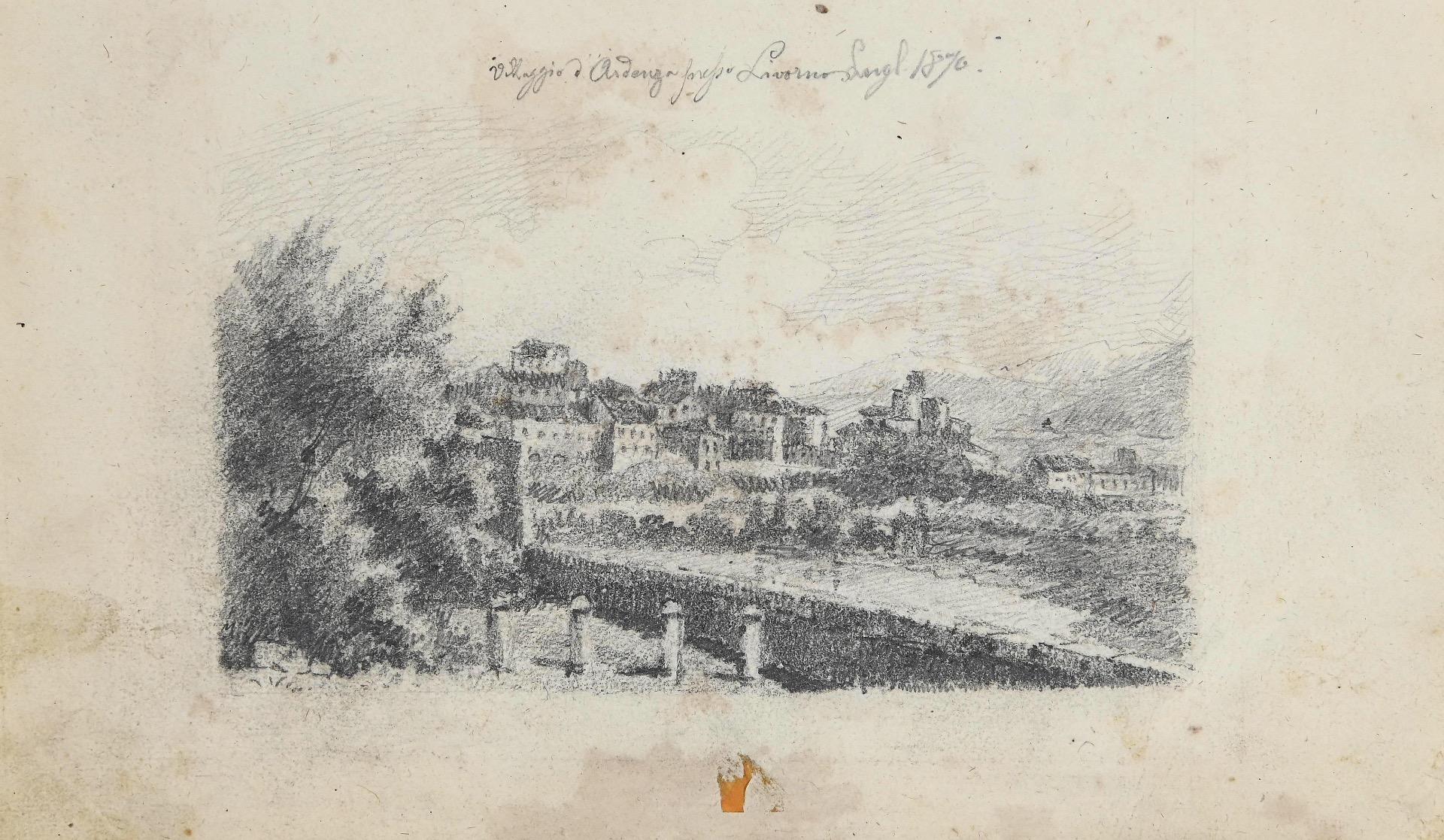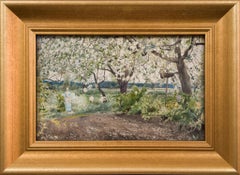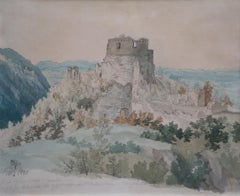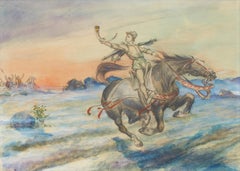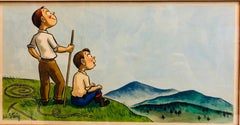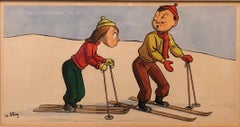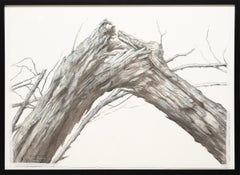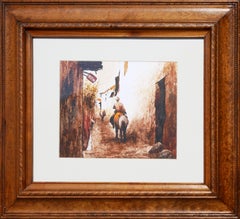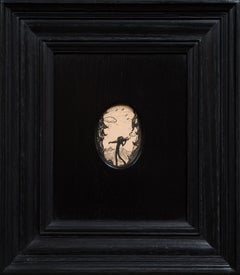
The Fiddler, Small Ink Drawing by John Bauer
View Similar Items
Want more images or videos?
Request additional images or videos from the seller
1 of 7
John BauerThe Fiddler, Small Ink Drawing by John Bauerc.1910-1915
c.1910-1915
About the Item
- Creator:John Bauer (1882 - 1918, Swedish)
- Creation Year:c.1910-1915
- Dimensions:Height: 11.23 in (28.5 cm)Width: 9.65 in (24.5 cm)
- Medium:
- Movement & Style:
- Period:
- Condition:Excellent condition. Hand-made oak frame with oak passe-partout by Christer Björkman.
- Gallery Location:Stockholm, SE
- Reference Number:1stDibs: LU1445214120532
About the Seller
5.0
Platinum Seller
Premium sellers with a 4.7+ rating and 24-hour response times
Established in 2020
1stDibs seller since 2020
181 sales on 1stDibs
Associations
International Confederation of Art and Antique Dealers' Associations
Authenticity Guarantee
In the unlikely event there’s an issue with an item’s authenticity, contact us within 1 year for a full refund. DetailsMoney-Back Guarantee
If your item is not as described, is damaged in transit, or does not arrive, contact us within 7 days for a full refund. Details24-Hour Cancellation
You have a 24-hour grace period in which to reconsider your purchase, with no questions asked.Vetted Professional Sellers
Our world-class sellers must adhere to strict standards for service and quality, maintaining the integrity of our listings.Price-Match Guarantee
If you find that a seller listed the same item for a lower price elsewhere, we’ll match it.Trusted Global Delivery
Our best-in-class carrier network provides specialized shipping options worldwide, including custom delivery.More From This Seller
View AllValley View with Pines and Distant Peaks, Sierra Nevada (Possibly Yosemite)
By Carl Oscar Borg
Located in Stockholm, SE
This luminous gouache captures a majestic mountain vista, likely set in California’s Sierra Nevada (possibly Yosemite). Two broad granite peaks with sunlit faces dominate the backgro...
Category
Early 20th Century Impressionist Landscape Drawings and Watercolors
Materials
Paper, Gouache
Watercolor The Garden at Sickelsjö, 1883
Located in Stockholm, SE
We are delighted to present a stunning watercolor by the Swedish artist Albert Theodor Gellerstedt. This artwork, titled "Sickelsjö Trädgård" was created on June 8, 1883. The paintin...
Category
1880s Romantic Landscape Drawings and Watercolors
Materials
Paper, Watercolor
Ruins of the Imperial Castle Outside Split in Croatia
Located in Stockholm, SE
Gustaf Wilhelm Palm (1810–1890) Sweden
Ruins of the Imperial Castle Outside Split in Croatia
pencil and watercolour
unframed: 23.6 x 29.2 cm (9 1/4 x 11 1/2 in)
framed: 40 x 45 cm...
Category
1840s Romantic Landscape Drawings and Watercolors
Materials
Paper, Watercolor
The Man Who Stole the Magic Horn by Swedish Artist Caleb Althin
By Caleb Althin
Located in Stockholm, SE
Caleb Althin (1866-1919)
The Man Who Stole the Magic Horn
Caleb Althin studied at the Academy of Fine Arts in Stockholm 1885–1894 with a few years break for studies abroad in decor...
Category
Early 20th Century Figurative Drawings and Watercolors
Materials
Watercolor, Pencil
$1,102 Sale Price
30% Off
Quiet Contemplation: Rural Serenity in Hagborg's Watercolor
By August Hagborg
Located in Stockholm, SE
The artwork we present is a rare watercolor by the distinguished Swedish artist August Hagborg, painted in the later part of his career between 1910 and 1920. This watercolour is a departure from Hagborg's often-seen beach scenes with mussel pickers and instead offers a glimpse into a serene, pastoral moment. The scene is set against a timber house, with a man and a woman standing alongside, their gazes directed away from the viewer, which invites contemplation about the story behind their distant stares.
Watercolors by Hagborg are rare, making this piece particularly special. Its fine details suggest a mastery of the medium, likely honed over the years of his extensive career. A written letter from Göteborgs Konstmuseum, dated to the 1940s, suggests a later date for this piece.
August Hagborg, born on May 26, 1852, in Gothenburg and passed away on April 30, 1921, in Paris, was a renowned figure in the art world. His education at the Royal Swedish Academy of Arts in Stockholm from 1871 to 1874 placed him among peers who would rise to prominence, such as Carl Larsson and Anders Zorn. Moving to Paris in the fall of 1875, Hagborg initially painted within the costume genre before finding his niche in coastal landscapes that garnered him accolades and recognition.
Hagborg's success was punctuated by his 1879 painting...
Category
1910s Realist Landscape Drawings and Watercolors
Materials
Watercolor
Eleven drawings of various subjects mounted on a printed sheet
Located in Stockholm, SE
Drawn at Danviken Hospital between 1841 and 1842.
Swedish art of the late 19th and early 20th centuries would appear significantly diminished if the works of artists who struggled w...
Category
1840s Figurative Drawings and Watercolors
Materials
Mixed Media
You May Also Like
Whimsical Illustration Hiking Cartoon, 1938 Mt Tremblant Ski Lodge William Steig
By William Steig (b.1907)
Located in Surfside, FL
Lighthearted Illustration of Outdoor Pursuits This one being cross country hiking signed "W. Steig"
Provenance: from Mrs. Joseph B. Ryan, Commissioned by Joe Ryan for the bar at his ski resort, Mount Tremblant Lodge, in 1938.
Mont Tremblant, P.Q., Canada
Watercolor and ink on illustration board, sights sizes 8 1/2 x 16 1/2 in., framed.
In 1938 Joe Ryan, described as a millionaire from Philadelphia, bushwhacked his way to the summit of Mont Tremblant and was inspired to create a world class ski resort at the site. In 1939 he opened the Mont Tremblant Lodge, which remains part of the Pedestrian Village today. This original illustration is on Whatman Illustration board. the board measures 14 X 22 inches. label from McClees Galleries, Philadelphia, on the frame backing paper.
William Steig, 1907 – 2003 was an American cartoonist, sculptor, and, in his later life, an illustrator and writer of children's books. Best known for the picture books Sylvester and the Magic Pebble, Abel's Island, and Doctor De Soto, he was also the creator of Shrek!, which inspired the film series of the same name. He was the U.S. nominee for both of the biennial, international Hans Christian Andersen Awards, as a children's book illustrator in 1982 and a writer in 1988.
Steig was born in Brooklyn, New York in 1907, and grew up in the Bronx. His parents were Polish-Jewish immigrants from Austria, both socialists. His father, Joseph Steig, was a house painter, and his mother, Laura Ebel Steig, was a seamstress who encouraged his artistic leanings. As a child, he dabbled in painting and was an avid reader of literature. Among other works, he was said to have been especially fascinated by Pinocchio.He graduated from Townsend Harris High School at 15 but never completed college, though he attended three, spending two years at City College of New York, three years at the National Academy of Design and a mere five days at the Yale School of Fine Arts before dropping out of each.
Hailed as the "King of Cartoons" Steig began drawing illustrations and cartoons for The New Yorker in 1930, producing more than 2,600 drawings and 117 covers for the magazine. Steig, later, when he was 61, began writing children's books. In 1968, he wrote his first children's book. He excelled here as well, and his third book, Sylvester and the Magic Pebble (1969), won the Caldecott Medal. He went on to write more than 30 children's books, including the Doctor DeSoto series, and he continued to write into his nineties. Among his other well-known works, the picture book Shrek! (1990) formed the basis for the DreamWorks Animation film Shrek (2001). After the release of Shrek 2 in 2004, Steig became the first sole-creator of an animated movie franchise that went on to generate over $1 billion from theatrical and ancillary markets after only one sequel. Along with Maurice Sendak, Saul Steinberg, Ludwig Bemelmans and Laurent de Brunhofff his is one of those rare cartoonist whose works form part of our collective cultural heritage.
In 1984, Steig's film adaptation of Doctor DeSoto directed by Michael Sporn was nominated for the Academy Award for Best Animated Short Film. As one of the most admired cartoonists of all time, Steig spent seven decades drawing for the New Yorker magazine. He touched generations of readers with his tongue–in–cheek pen–and–ink drawings, which often expressed states of mind like shame, embarrassment or anger. Later in life, Steig turned to children's books, working as both a writer and illustrator.
Steig's children's books were also wildly popular because of the crazy, complicated language he used—words like lunatic, palsied, sequestration, and cleave. Kids love the sound of those words even if they do not quite understand the meaning. Steig's descriptions were also clever. He once described a beached whale as "breaded with sand."
Throughout the course of his career, Steig compiled his cartoons and drawings into books. Some of them were published first in the New Yorker. Others were deemed too dark to be printed there. Most of these collections centered on the cold, dark psychoanalytical truth about relationships. They featured husbands and wives fighting and parents snapping at their kids. His first adult book, Man About Town, was published in 1932, followed by About People, published in 1939, which focused on social outsiders. Sick of Each Other, published in 2000, included a drawing depicting a wife holding her husband at gunpoint, saying, "Say you adore me."
According to the Los Angeles Times, fellow New Yorker artist Edward Sorel...
Category
1930s Naturalistic Figurative Drawings and Watercolors
Materials
Archival Ink, Watercolor, Illustration Board
Whimsical Illustration Skiing Cartoon, 1938 Mt Tremblant Ski Lodge William Steig
By William Steig (b.1907)
Located in Surfside, FL
Lighthearted Illustration of Outdoor Pursuits This one being a Skiing scene, a boy and a girl on skis. signed W. Steig
Provenance: from Mrs. Joseph B. Ryan, Commissioned by Joe Ryan for the bar at his ski resort, Mount Tremblant Lodge, in 1938.
Mont Tremblant, P.Q., Canada
Watercolor and ink on illustration board, sights sizes 8 1/2 x 16 1/2 in., framed.
In 1938 Joe Ryan, described as a millionaire from Philadelphia, bushwhacked his way to the summit of Mont Tremblant and was inspired to create a world class ski resort at the site. In 1939 he opened the Mont Tremblant Lodge, which remains part of the Pedestrian Village today. This original illustration is on Whatman Illustration board. the board measures 14 X 22 inches. label from McClees Galleries, Philadelphia, on the frame backing paper.
William Steig, 1907 – 2003 was an American cartoonist, sculptor, and, in his later life, an illustrator and writer of children's books. Best known for the picture books Sylvester and the Magic Pebble, Abel's Island, and Doctor De Soto, he was also the creator of Shrek!, which inspired the film series of the same name. He was the U.S. nominee for both of the biennial, international Hans Christian Andersen Awards, as a children's book illustrator in 1982 and a writer in 1988.
Steig was born in Brooklyn, New York in 1907, and grew up in the Bronx. His parents were Polish-Jewish immigrants from Austria, both socialists. His father, Joseph Steig, was a house painter, and his mother, Laura Ebel Steig, was a seamstress who encouraged his artistic leanings. As a child, he dabbled in painting and was an avid reader of literature. Among other works, he was said to have been especially fascinated by Pinocchio.He graduated from Townsend Harris High School at 15 but never completed college, though he attended three, spending two years at City College of New York, three years at the National Academy of Design and a mere five days at the Yale School of Fine Arts before dropping out of each.
Hailed as the "King of Cartoons" Steig began drawing illustrations and cartoons for The New Yorker in 1930, producing more than 2,600 drawings and 117 covers for the magazine. Steig, later, when he was 61, began writing children's books. In 1968, he wrote his first children's book. He excelled here as well, and his third book, Sylvester and the Magic Pebble (1969), won the Caldecott Medal. He went on to write more than 30 children's books, including the Doctor DeSoto series, and he continued to write into his nineties. Among his other well-known works, the picture book Shrek! (1990) formed the basis for the DreamWorks Animation film Shrek (2001). After the release of Shrek 2 in 2004, Steig became the first sole-creator of an animated movie franchise that went on to generate over $1 billion from theatrical and ancillary markets after only one sequel. Along with Maurice Sendak, Saul Steinberg, Ludwig Bemelmans and Laurent de Brunhofff his is one of those rare cartoonist whose works form part of our collective cultural heritage.
In 1984, Steig's film adaptation of Doctor DeSoto directed by Michael Sporn was nominated for the Academy Award for Best Animated Short Film. As one of the most admired cartoonists of all time, Steig spent seven decades drawing for the New Yorker magazine. He touched generations of readers with his tongue–in–cheek pen–and–ink drawings, which often expressed states of mind like shame, embarrassment or anger. Later in life, Steig turned to children's books, working as both a writer and illustrator.
Steig's children's books were also wildly popular because of the crazy, complicated language he used—words like lunatic, palsied, sequestration, and cleave. Kids love the sound of those words even if they do not quite understand the meaning. Steig's descriptions were also clever. He once described a beached whale as "breaded with sand."
Throughout the course of his career, Steig compiled his cartoons and drawings into books. Some of them were published first in the New Yorker. Others were deemed too dark to be printed there. Most of these collections centered on the cold, dark psychoanalytical truth about relationships. They featured husbands and wives fighting and parents snapping at their kids. His first adult book, Man About Town, was published in 1932, followed by About People, published in 1939, which focused on social outsiders. Sick of Each Other, published in 2000, included a drawing depicting a wife holding her husband at gunpoint, saying, "Say you adore me."
According to the Los Angeles Times, fellow New Yorker artist Edward Sorel...
Category
1930s Naturalistic Figurative Drawings and Watercolors
Materials
Archival Ink, Watercolor, Illustration Board
"Broken Spirit, " Charcoal on Paper
By Bruno Surdo
Located in Chicago, IL
Chicago-based fine art painter Bruno A. Surdo is classically trained in drawing and oil painting in the tradition of Renaissance masters. With strong command of the human form, Surdo...
Category
21st Century and Contemporary Naturalistic Figurative Drawings and Water...
Materials
Charcoal, Paper
Brown-Toned Naturalistic Backstreet City Scene Watercolor Landscape
Located in Houston, TX
Neutral tone naturalistic city scene by an unknown artist. The work features a central figure on horseback riding down a village backstreet. The "hostal" street sign overhead indicat...
Category
20th Century Naturalistic Figurative Drawings and Watercolors
Materials
Watercolor
"Trinity Flares" Modern Blue Toned Fishing Landscape Watercolor Painting
Located in Houston, TX
Modern watercolor seascape painting by renowned sporting artists John P. Cowan. The work was originally created by Cowan to be used by Schlumberger as part of their fishing schedule calendar. Signed in the front lower left corner. Currently hung in a gold frame with a cream matting. Provenance includes a framed letter...
Category
1960s Naturalistic Landscape Drawings and Watercolors
Materials
Watercolor
Niagra Falls Spring and Winter Watercolor Landscapes
By Maude Leach
Located in Houston, TX
Original watercolor landscape painting of Niagra falls in the winter and in the spring. The pair of paintings are signed by the artist in the bottom corne...
Category
20th Century Naturalistic Landscape Drawings and Watercolors
Materials
Watercolor
Recently Viewed
View AllMore Ways To Browse
Shipwreck Oil Paintings
Antique Gnome
C Bauer
German Gnome
Bauer Oil Painting
Antique German Gnomes
W M Birchall
Walter Dahn
Wilhelm Van De Velde The Younger
Wollheim Paintings
Zasu Pitts
Zoya Cherkassky
1985 Joan Collins Portrait By Louis Nadalini
2 Door Cabiner Country French
Albert Borsig
Alessandro Michelle
Alice Luella Fidler
Andr� Meurice On Sale
